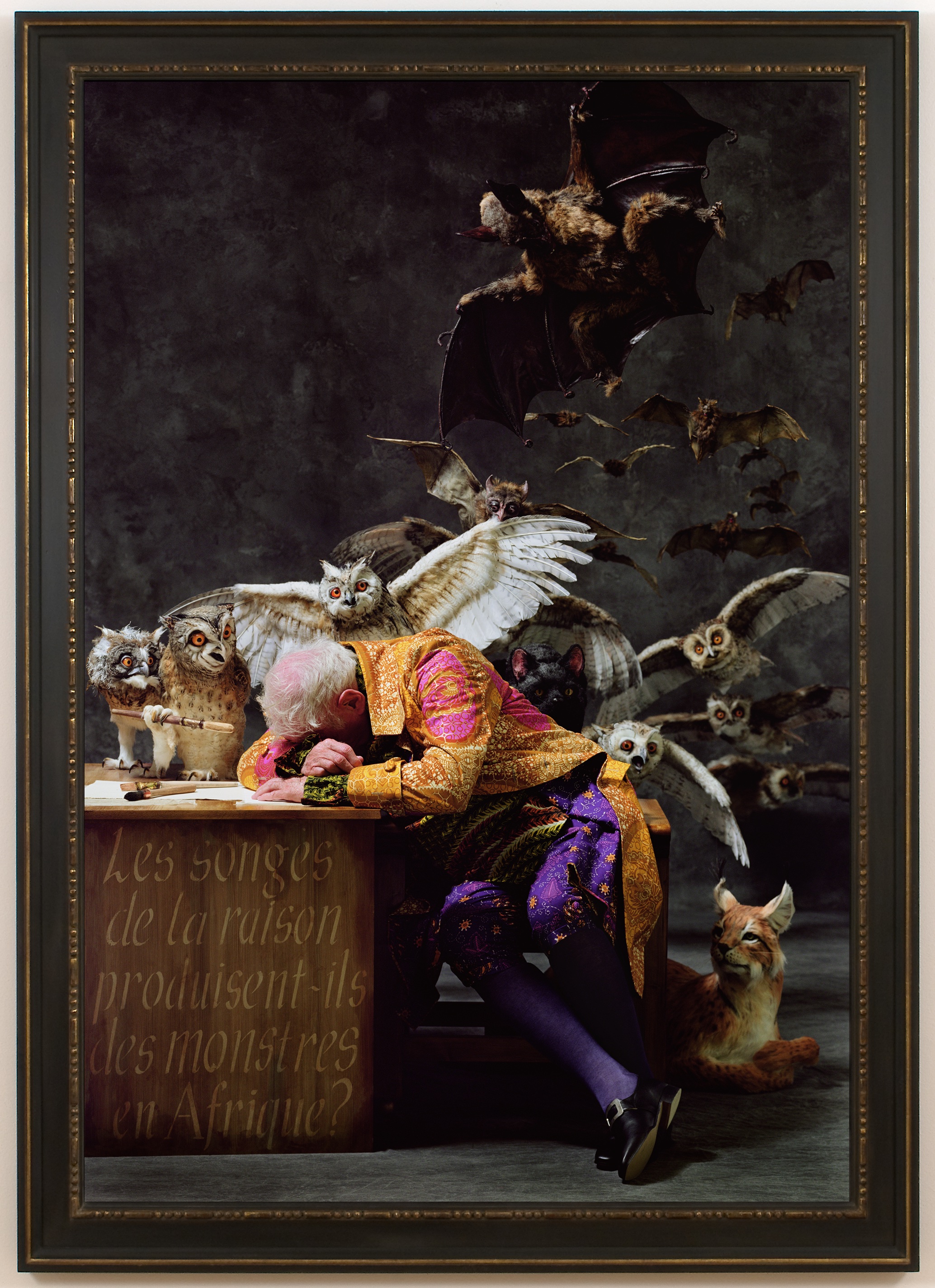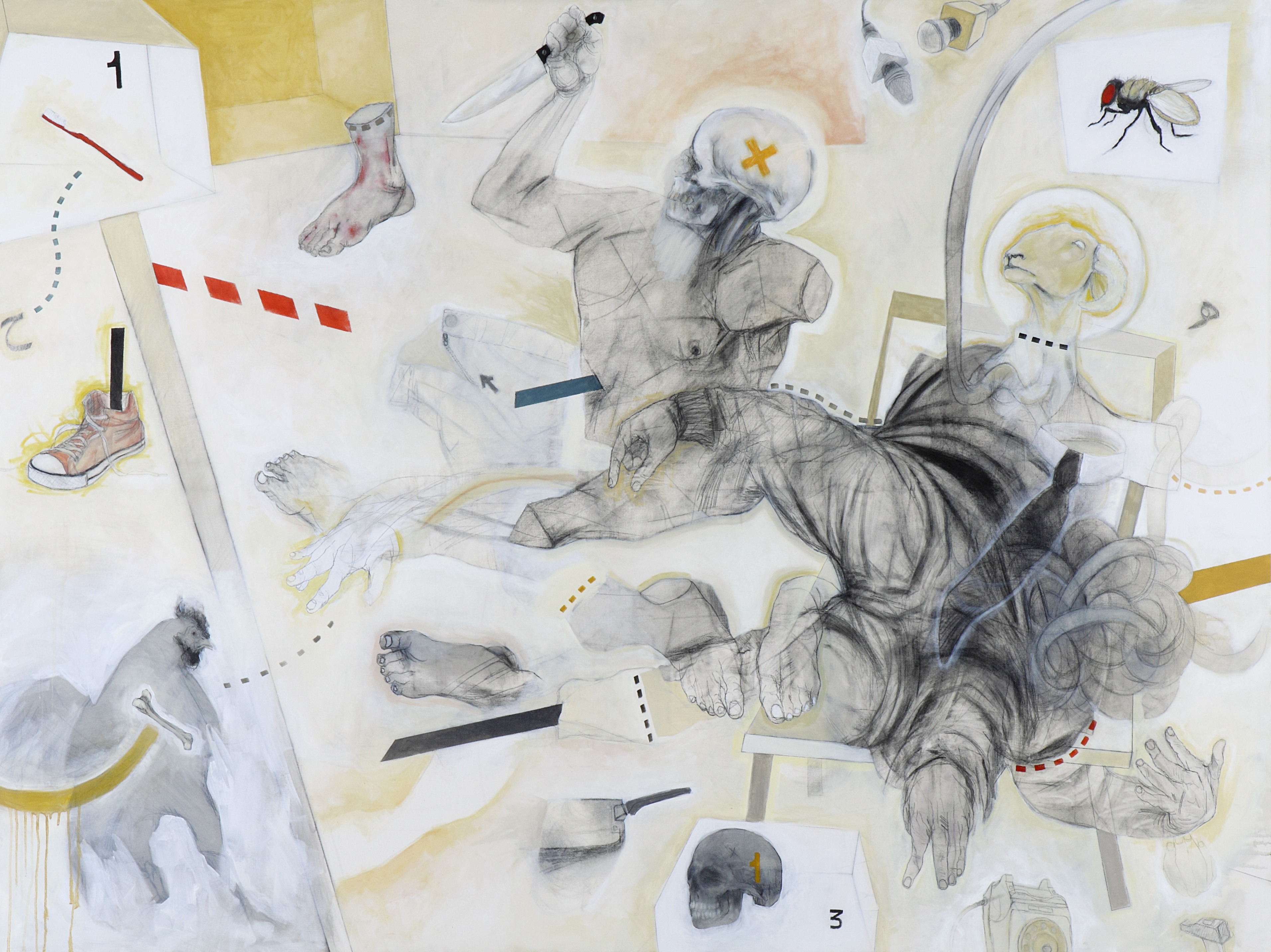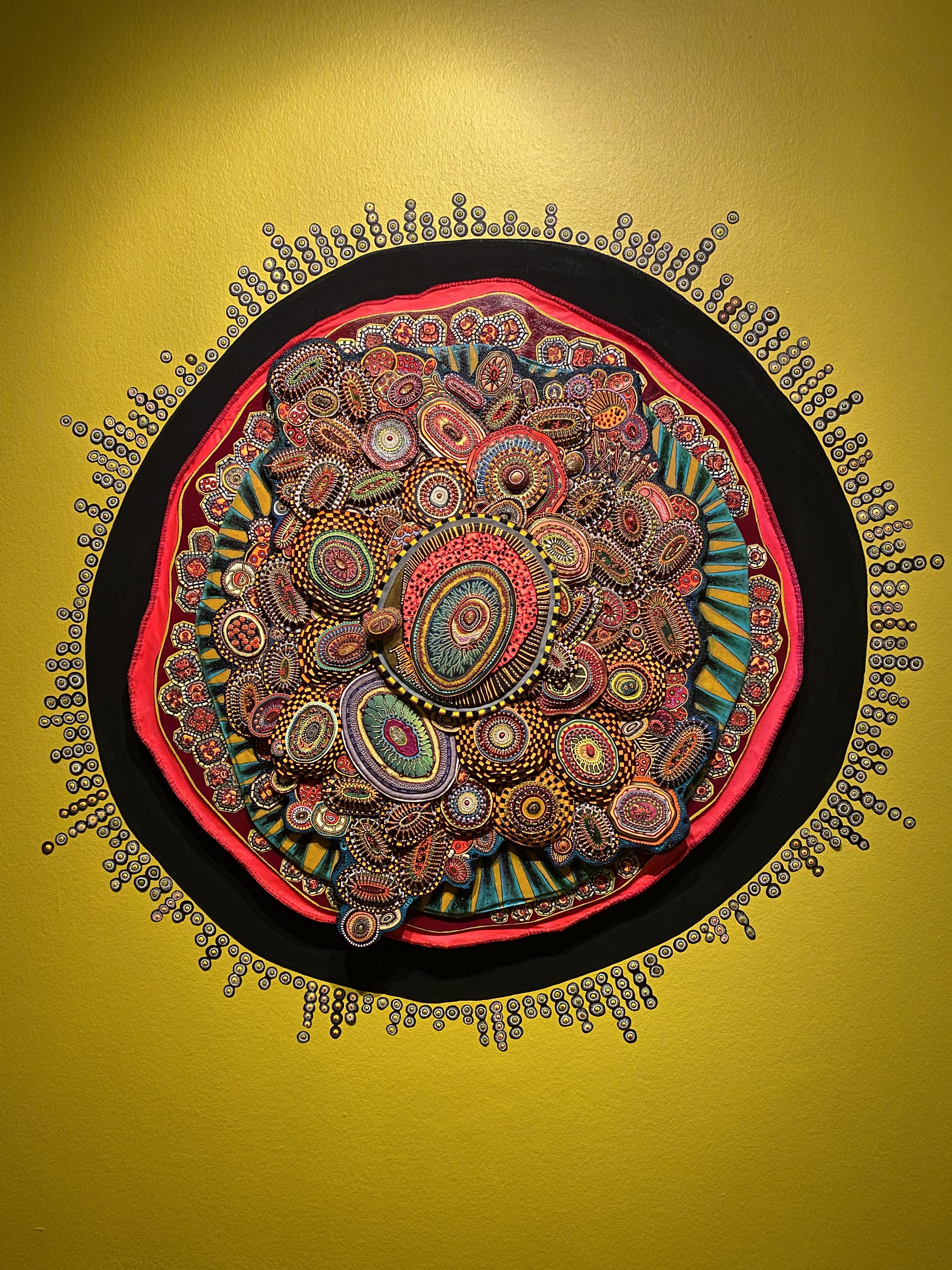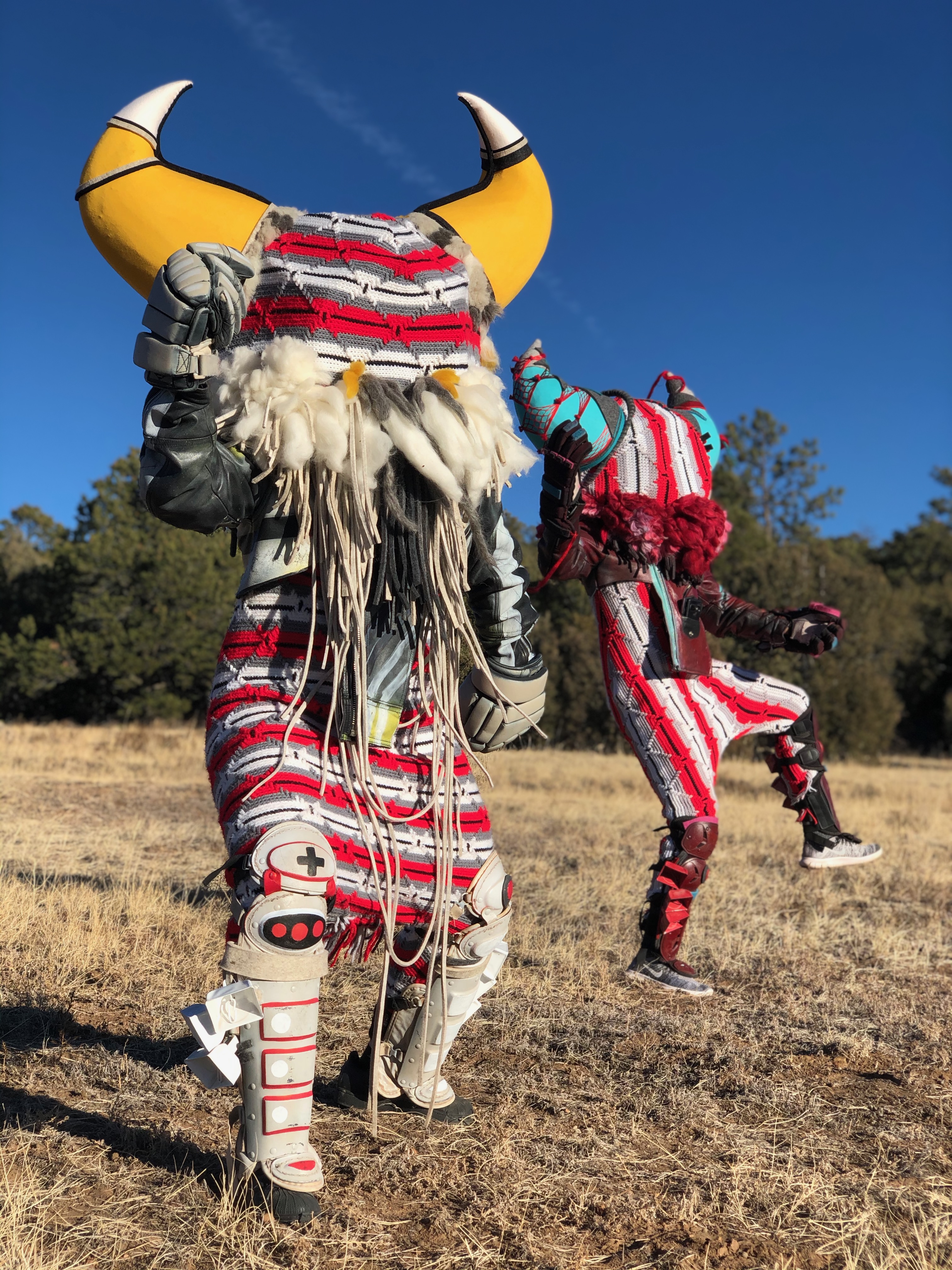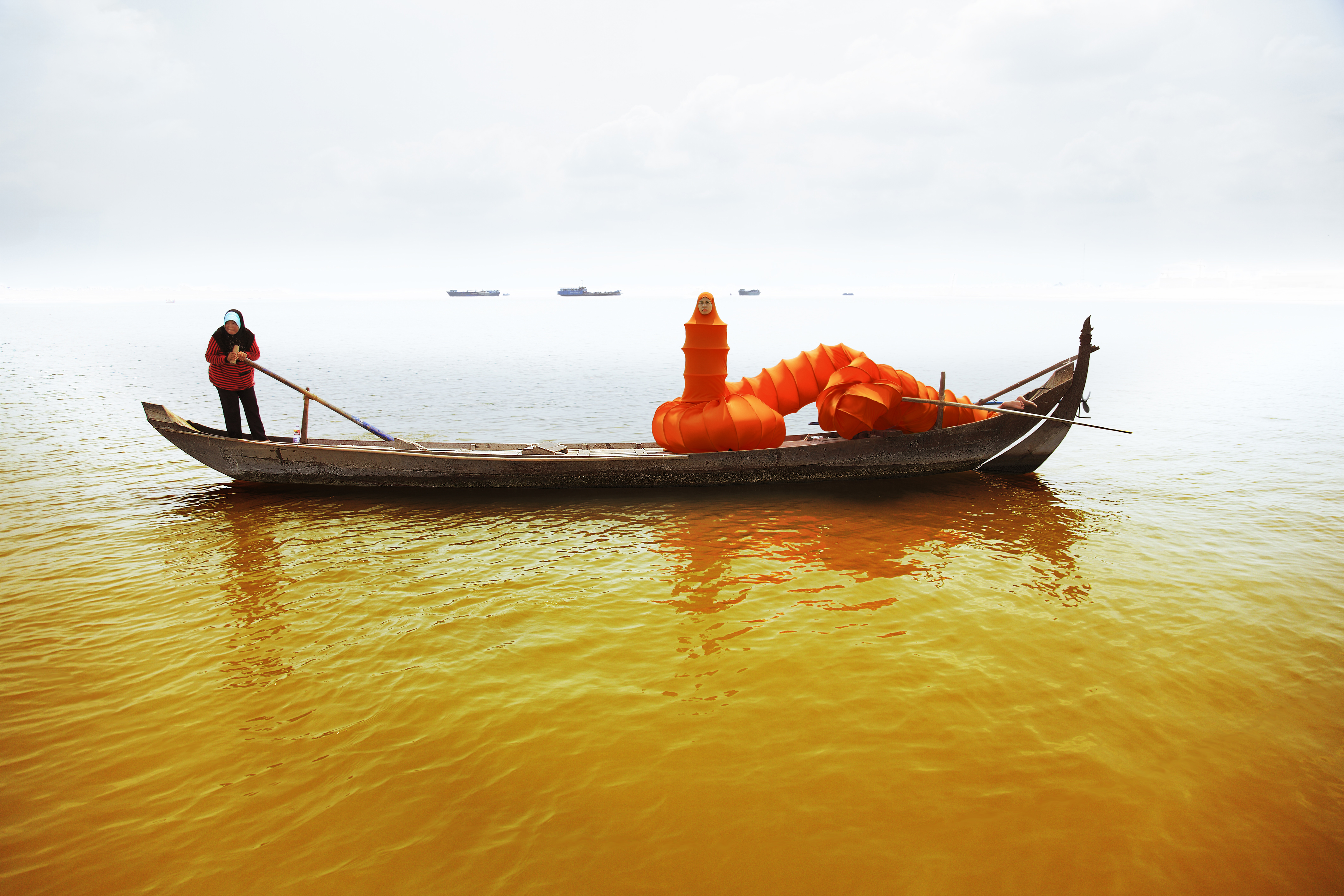And I Must Scream
“I Have No Mouth, and I Must Scream” is the title of Harlan Ellison’s 1967 short story about the reduction of the human species to a source of energy and torture for a computer developed to wage war on behalf of humans. The computer, bitter at its maker “for having created him but giving him no place to go,” demolishes the world as we know it and controls what remains of the human race.1 But a human urge to release, to call out, and to stand up in the face of oppression and scream endures within those who remain. What is so striking, scary, and ominous about the machine that holds the humans captive is that it was born of men themselves. Similarly, many of the most horrifying tragedies are wrought of man-made systems. For example, changes in weather are natural; hurricanes, earthquakes, and flooding have always devastated communities. Yet the excessive burning of fossil fuels, mining of natural resources, monoculture, and disproportionate waste that comes with consumerism, among many other human-driven industries, have increased the intensity and frequency of devastating weather that results in displacement and squalid conditions that cause disease and death. This is of our own making, and it could also unmake us.
As humans we have agency to make decisions for ourselves, but under societal structures, that agency is often stolen from us—this could be done overtly through oppressive and violent regimes, but it can also be done covertly through obscure policies that allow corporations to commit actions such as polluting our water that perpetuate disparities like social inequality. Ellison writes of the Allied Mastercomputer “we had created him to think, but there was nothing it could do with that creativity. In rage, in frenzy, the machine had killed the human race, almost all of us, and still it was trapped.” In a twist of irony, by the end of the story the computer’s name takes on Cartesian significance: “AM could not wander, AM could not wonder, AM could not belong. He could merely be. And so, with the innate loathing that all machines had always held for the weak, soft creatures who had built them, he had sought revenge.”2 The machine is the type of monster this exhibition examines: born of men and beyond their control. But the art in this exhibition also speaks of our human need to create, connect, and grow.
And I Must Scream features works by ten contemporary artists in which monstrous, grotesque, and humanoid figures and forms confront and give shape to the inconceivable crises we face today, from environmental destruction and human rights violations to governmental corruption, displacement, and the recent pandemic that has distinctly affected all of us. Through this lens, which acts as a call to action, the exhibition shows these issues to be both urgent and interconnected. These concerns cannot be examined in isolation and to do so makes us vulnerable to the monsters born of us and the destruction we cause.
The catalogue is an extension of the exhibition, examining the artists more closely and the themes more holistically. The second chapter is a visual essay by Egyptian artist Ganzeer, uncovering the role of imagery in mythmaking and the role of mythmaking in controlling national identity and individual freedom. Chapter 3 scratches the surface of environmental destruction as a social, political, and economic issue that can be understood in a more nuanced way through the visual metaphor of the monster. Chapter 4 is a collaboration with art historian Rachel P. Kreiter examining hygiene theater and magical thinking as a way to manage a pandemic that we largely do not understand, but also how this opens crevasses in which corruption can flourish and financial opportunism takes advantage of those who fear the unknown. The final essays are meant to inspire compassion, hope, and action. Chapter 5 is a conversation among conservators, led by Ann Frellsen, a National Heritage Responder, and Renée Stein, director of conservation at the Michael C. Carlos Museum. They discuss the critical role that visual heritage plays in a community’s recovery after disaster. The final chapter extends this discussion by examining the monster as a creature of renewal. Accompanying the essays are catalogue entries for each of the artists, elaborating on their monsters within the context of the exhibition.
The term “monster” here allows an exploration of physical, grotesque creatures or forms that hold conceptual value for the negative space around which a rational understanding of order or rightness exists. Monsters are big and all-consuming; humans are bipedal and two-handed and relative to our physical environments do not take up much room, so when catastrophes get large and entangled they take on a metaphorical monstrous quality. This could be the Leviathan as representative of underlying systems like capitalism based on an economy of growth, or it could be the virus that invades our body and degrades our culture. These are cases in which individual action is not effective and collective action is the only way to affect change. The individual, broadly construed, is not a monster; rather, human systems are so big they accelerate beyond any one individual’s control, fueling the man-monster dichotomy. In some cases the monster is captivating; in other cases, repulsive. But in every case, the monster is the visual expression of uncertainty. If we are looking critically, the use of the monster in literary and visual artworks forces us to ask what these figures really represent, and thus examine more closely the systems we create and the power they hold. Often, these monsters are the manifestation of ecosystems being out of balance and the disposal of the human resource to generate income.
The exhibition, divided into five themes—corruption and human rights violations, environmental destruction, displacement, the COVID-19 pandemic, and renewal—begins by examining the birth of the monster as a creature that transpires from our own making. Yinka Shonibare’s photographic series The Sleep of Reason Produces Monsters, based on Francisco Goya’s 1799 series of aquatints, Los Caprichos, is the critique of a society that lacks reason, opening up the potential for monstrous forces to proliferate in its absence.3
The monsters that emerge allow us to separate the destruction, corruption, and violence from ourselves. We can begin to believe that we humans aren’t destroyers, but creators, and it is the emergent monsters that destroy. Peter Schjeldahl writes of Los Caprichos that “the same petrifying dreadfulness marks those intermittent engravings which impute monstrousness—embodied by eruptive owls or witches—to the dreaming states of the putatively rational. Goya doesn’t indict the evils of individuals and groups; he amasses evidence of universal depravity.”4 Once unleashed, the creatures seem to roam far beyond our control, and we can only recognize their shape by the destruction they leave behind. They also develop a momentum that makes it feel as though their damage is not of our doing. This exhibition sits inside this unnerving space with artists who use these forms to make us uncomfortable, who create confusion between the grotesque and the captivating. This is, perhaps, the most dangerous state of the monster, when, like AM, it has agency, power, and control, but no ethical convictions to steer its decisions—when the systems and structures operate without humanity.
Shonibare takes this visual vernacular and applies it directly to the colonization of Africa by dressing the sleep of reason in Wax Hollandais, a textile that has come to be associated with African fashion, but is a colonial European commercial enterprise. This storyline continues with Laeïla Adjovi and Loïc Hoquet’s 2016 photographic series Malaïka Dotou Sankofa in which, after the mistreatment and exploitation of Africa, these same colonial powers taunt the continent, demanding she stand up after being thoroughly knocked out. The creature that emerges is wounded but hopeful, aggrieved but with wings made of her own sense of self.
This is a critical contrast to the work of Ganzeer, Steve Bandoma, and Thameur Mejri, whose installation, drawings, and paintings examine governmental corruption and human rights violations as systems of dehumanization in which the monsters must make monsters of their victims in order to justify their own crimes. Philosopher David Livingstone Smith suggests that contrary to the oft-repeated idea that to dehumanize is to characterize someone as subhuman, people who dehumanize their victims “use dehumanizing language as a means to demean them or as a deliberate attempt to rationalize acts of abominable cruelty.”5 He goes on to explain that dehumanization is a psychological phenomenon and “is characteristically elicited by political propaganda and nurtured by ideologically suffused social practices.”6 It is important to note that humans resist hurting others, either passively (and we could explore the way in which this passivity or ignorance actually enables those who willingly inflict harm and perpetuate systems of oppression) or actively as conscientious objectors or activists. But Livingstone Smith expresses clearly that “conflict precedes and motivates dehumanization: we dehumanize others because we want to kill, harm, or oppress them, rather than the other way around.”7 The corrupt dictatorships that these artists denounce dehumanize their citizens and commit violence against them because they threaten the regimes’ survival.
This exhibition asks the question, can we apply the same psychological brutality to any of the themes explored through this art? Can we “dehumanize” the environment or those who risk exposure to the pandemic, and is this the only way in which we can justify destroying these ecosystems and putting our frontline workers in unnecessary risk? The purpose of this exhibition, however, is not to lay blame specifically, but to emphasize the way in which we are interconnected. Interconnectedness is beautiful, and to underestimate its power is to make individual decisions with systemic ramifications. The global pandemic of 2020 has shown us this in real time.
Deforestation and socioeconomic disparities lead to the displacement of people and animals. This leads to increased exposure to new viruses. Globalization helps spread those viruses rapidly, increasing the chances for pandemics, but also for social and economic disruption. While Nicholas Kahn and Richard Selesnick’s series Eisbergfreistadt considers the intersections between environmental destruction and greed that develops into disaster capitalism, Fabrice Monteiro’s photographs from the series Prophecy explore the opposite: the way in which corporate opportunism and abuse can destroy an entire ecosystem and put lives at risk. Regardless of the framework used to examine the connections, we have begun to see the way in which these forces infiltrate our space.
Regardless of culture, time, or place, monsters have long been used to represent the dangers of the unknown and uncertain world: alluded to in medieval sagas, the Nordic Kraken, which emerged from the depths of the Greenland Sea to destroy any vessel that passed its wake, was an explanation for the dangers of a seafaring life.8 In the first century CE, Pliny the Elder described the Basilisk in his Natural History as the serpent king of Cyrenaica (in present-day Libya), which sat at the edge of the Roman Empire and therefore the edge of the world. Like the Gorgon Medusa, the Basilisk guards all things at the edge of the world. In Swahili seafaring communities on the east coast of Africa, Nguva is a siren who lures fishermen to their graves emphasizing the power, importance, and danger of the sea.9 Another entity, connected to Egungun, a masking tradition from Yorubaland in present-day Nigeria, is Agan, a mask that that emerges from the darkness at the edges of town to announce the arrival of Egungun and warn of the dangers that lie beyond the safety of the community.10 Nothing is more threatening to a noninitiate than something that can be heard, but not seen.11 Its grotesque and terrifying figure is conjured in each individual’s imagination, taking advantage of one’s deepest fears. Monsters and dangerous creatures give shape to the unknown because the unknown is uncomfortable and anxiety-producing. The monster monitors boundaries—physical spaces and social behavior—between the transgressive and the acceptable.
Today, the idea of the unknown has been twisted into something slightly more complex. The age of exploration and the scientific revolution have helped us understand faraway lands, the deep ocean, and outer space. The internet has democratized information, though this is only theoretically true because access to the internet is not universal, misinformation and outdated information abounds, and of course what actually populates in your search is tailored specifically to your interests, mediated by big business, and regulated by governments. The unknown, thus, has become more sinister. New York Times contributor Alexandra Kleeman writes, “increasingly, the threats and fissures that mark our reality are known, but this doesn’t make them any easier to comprehend. It’s only when a potential disaster turns actual that it becomes real to us — and in that moment it will still feel incomprehensible, impossible, unforeseen.” 12 We know that the emission of fossil fuels causes the earth’s temperature to rise to such levels that ice caps melt, changing the weather patterns and climates that change ecosystems. Yet we struggle to imagine what this will mean for our future. Similarly, it is often difficult to process the effects of corruption, displacement, and human rights violations that occur in faraway countries. We can be outraged, but without a direct link or a clear impact, such as rising gas prices, it is challenging to comprehend.
In 2020, however, the culmination of our collective detachment from crises happening outside our own periphery emerged in the form of a global pandemic. We know that global, man-made deforestation that displaces animals leads to a prevalence of viruses not previously encountered. Some of these can be transmitted from animals to humans; some are transmissible from human to human; some of those can be fatal. New strains and variations of circulating viruses are continuously being spread across the globe, but when the factors of high transmissibility and high mortality coexist, as we have seen with COVID-19, it can lead to a global pandemic. When the environmental devastation leads to an outbreak, public health experts have protocols for controlling the spread and containing the damage. But when factors such as governmental corruption and human displacement are introduced, the monster is unleashed. This is where Amie Esslinger’s haunting biological forms take over. Viruses and diseases infiltrate the body and use our system for their own benefit. This is monstrous in part because of how destructive these opportunists can be and, in part, because it happens without our knowing it, until it is too late. Philosopher Noël Carroll claims that monsters have to present physical danger and intellectual danger: monsters are “threats to common knowledge…challenges to the foundations of a culture’s way of thinking…”13
This is why the pandemic is, by its very nature, monstrous. We understand viruses to exist, to make us sick, and at times to kill us. Movies are made about the invisible threat to humanity that viruses pose, but arguably, what we have learned in confronting a real one is that the virus itself was not the biggest contributor in causing a pandemic. Rather, it was the way in which the virus threatened our way of life. Carroll continues that monsters “must be dangerous. This can be satisfied simply by making the monster lethal. That it kills and maims is enough. The monster may also be threatening psychologically, morally or socially. It may destroy one’s identity…, seek to destroy the moral order…, or advance an alternative society.”14 Perhaps this is also where the monster’s weakness lies.
In Ellison’s story, the creature wins, but its mission is compromised. The protagonist reflects: “inwardly: alone. Here. Living under the land, under the sea, in the belly of AM, whom we created because our time was badly spent and we must have known unconsciously that he could do it better. At least the four of them are safe at last. AM will be all the madder for that. It makes me a little happier. And yet … AM has won, simply … he has taken his revenge … I have no mouth. And I must scream.”15 Perhaps we are powerful enough to lasso the creature and bend it back again to our will.
In that spirit, the exhibition concludes by returning to our humanity and celebrating our interconnectedness. Anida Yoeu Ali takes the Buddhist Bug back to Cambodia, a site of conflict, devastation, and displacement during the Khmer Rouge regime—an era that was particularly devastating for the minority Cham Muslim population, which was systematically executed and exiled. Ali’s bug, a long invertebrate creature brought to life by human performers, returns to Cambodia as a creature whose body winds perfectly through the landscape and environments and yet stands out as a spectacle and a stranger. Everyone who encounters the kind and gentle bug is reminded of their own humanity.
Kleeman writes in her review of The Unreality of Memory by Elisa Gabbert that “at a time when extreme climate change, economic recession and a global health crisis make it crucial to recognize our predicament clearly, how can we make the disastrous seem real enough to inspire effective action?” 16
Ultimately, what I hope for the viewer, for the exhibition, and for our global community is not that we give in to disaster culture or vanquish the monsters, but that we see ourselves in the Other and in the monster. Once we can see how we are connected to the victims, the perpetrators, and the devastation, we can take ownership over the monsters and persuade their actions into actions of compassion, kindness, growth, recovery. Cannupa Hanska Luger employs an active approach to art-making that recalls historical Indigenous land-based action to restore balance. Mandan Buffalo Dancers participated in a pact to call the buffalo back until the dance was outlawed from 1904 up to the passing of the American Indian Religious Freedom Act in 1978. Luger takes inspiration from this acknowledgement in Muscle, Bone, and Sinew and creates a monster with incredible influence. Just as the Buffalo Dance is meant to bring the prosperity and the life force of the buffalo back to the Mandan, Muscle, Bone, and Sinew were created to cast seed across preserved land on Turtle Island that was subjected to a controlled burn with the intention of replenishing and renewing the earth.
The monstrous hybridized creature that may engender fear at first sight actually demonstrates that when we see ourselves in the monster we can create positive change and growth; we can restore and rebuild. This is what this exhibition strives for: to see the monstrosities of the monster; to see ourselves in the monster; to keep our ecosystem in balance; and to redirect the monster to no longer be able to harm, but to love.
Notes
-
Damien Walter, “Interview – Q&A: Harlan Ellison,” The Guardian, June 14, 2013, https://www.theguardian.com/books/2013/jun/14/harlan-ellison-q-and-a-interview. ↩︎
-
Harlan Ellison, “I Have No Mouth, And I Must Scream,” in I Have No Mouth and I Must Scream (New York: Open Road Integrated Media, Inc., 2014), 24. The original publication appeared in IF: Worlds of Science Fiction in March, 1967. ↩︎
-
“Plate 43 from ‘Los Caprichos’: El sueño de la razon produce monstruos,” The Metropolitan Museum of Art, accessed January 26, 2021, https://www.metmuseum.org/art/collection/search/338473. ↩︎
-
Peter Schjeldahl, “Goya and the Art of Survival,” The New Yorker, Sept. 21, 2020, https://www.newyorker.com/magazine/2020/09/21/goya-and-the-art-of-survival. ↩︎
-
David Livingstone Smith, “Paradoxes of Dehumanization,” Social Theory and Practice 42, no. 2 (April 2016): 417. See also Smith “The Problem of Humanity and the Problem of Monstrosity,” 5, accessed May 12, 2021, https://www.cl.cam.ac.uk/~rja14/shb20/smith1.pdf. ↩︎
-
Smith, “Paradoxes of Dehumanization,” 419. ↩︎
-
Smith, “Paradoxes of Dehumanization,” 426. ↩︎
-
Described in the Konungs Skuggsja (1250) and the Saga of Orvar-Oddr (13th century). ↩︎
-
Nguva translates from Swahili as dugong or manatee, but also as siren or mermaid. See for example the work by Kenyan artist Wangechi Mutu. “Hybrid Power: Water Woman,” Art-To-Go, Baltimore Museum of Art, accessed January 20, 2021, https://cdn.artbma.org/2021/11/09172534/ATG-01-19.pdf and “Wangechi Mutu: Nguva na Nyoka,” Victoria Miro exhibition leaflet, 2014, accessed Jan 20, 2021, https://www.victoria-miro.com/usr/documents/exhibitions/list_of_works_url/items/26/26e3dc68ea86482ba4ebd4957a62b453/wangechi-mutu-final-leaflet.pdf. ↩︎
-
Babatunde Lawal, “Àwòrán: Representing the Self and Its Metaphysical Other in Yoruba Art,” The Art Bulletin 83, no. 3 (2001): 519-520. See also Oludare Olajubu and JRO Ojo, “Some Aspects of Oyo Yoruba Masquerades,” Africa: Journal of the International African Institute 47, no. 3 (1977): 269. ↩︎
-
Lawal, “Àwòrán,” 519-520. See also Robert Farris Thompson, African Art in Motion: Icon and Act (Los Angeles: University of California Press, 1979), 221. ↩︎
-
Alexandra Kleeman, “Disaster May Upend Reality, but What is ‘Real’ Anyway?” The New York Times, August 11, 2020. ↩︎
-
Noel Carroll, The Philosopher of Horror, or, Paradoxes of the Heart (New York: Routledge, 1990), 34. See also Smith, “Paradoxes of Dehumanization,” 433. ↩︎
-
Smith, “Paradoxes of Dehumanization,” 433. ↩︎
-
Ellison, “I Have No Mouth and I Must Scream,” 29. ↩︎
-
Kleeman, “Disaster May Upend Reality, but What is ‘Real’ Anyway?” ↩︎

